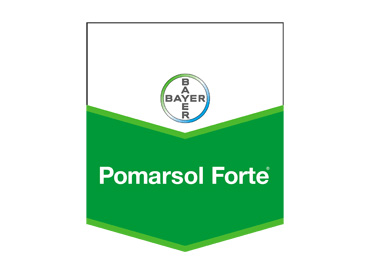

FEATURES
PRODUCT GROUP
EFFECTIVE SUBSTANCE
FORMULATION
PACKING TYPES
|
Plant Name |
Disease Name |
Usage Dose and Period |
Time Between Last Spraying and Harvest (Days) |
|
Peach |
Leaf-piercing(Wilsonomyces carpophylus)Monilya (Sclerotinia laxa) |
300 g / 100 l water |
14 |
|
Apricot |
Monilya(Sclerotinia laxa) |
200 g / 100 l water |
14 |
|
Apple |
Black stain(Venturia inaequalis) |
150 g / 100 l water |
14 |
|
Pear |
Black stain(Venturia pirina) |
150 g / 100 l water |
14 |
|
Plum |
Pocket disease (Taphrina pruni) |
300 g / 100 l water |
14 |
|
Cherry |
Monilya(Sclerotinia laxa) |
150 g / 100 l water |
14 |
|
Onion |
Drive(Urocytis cepulae) |
5 kg / 100 kg shallots |
- |
|
Chickpea |
anthracnose(Ascochyta rabiei)
|
300 g / 100 kg seeds |
- |
|
200 g / 100 l water (spraying green parts) |
14 |
||
|
Vegetable seedlings |
Root rot (Alternaria, Fusarium, Rhizoctonia, Sclerotina, Pythium spp.) |
200 g / 100 l water seed |
14 |
|
Beans |
Root rot (Fusarium spp., Macrophomina phaseoli, Rhizoctonia spp.) |
300 g / 100 l water |
14 |
|
Melon watermelon |
Anthracnose (Colletotrichum lagenarium) |
300 g/100 kg seed |
- |
|
Hazelnut
|
Dormouse (Mucardinus sp.) As abductor) |
4 kg / 100 l water |
14 |
|
Seven sleeps(Glis glis) as abductor |
4 kg / 100 l water |
14 |
|
|
In seedlings and omca |
Field Bunny (Lepus europaes) |
150 g / 1 l water |
14 |
|
Tobacco |
Dumping-off (Fusarium spp., Rhizoctonia solani, Pythium sp., Alternaria spp., Sclerotina spp.) |
It is used in 200 g / 100 l water or 2,5-3 g / m2 seedling period. |
14 |
|
Sugar beet |
Root blight (Phoma betae) |
400 g / 100 kg seed |
- |
RECOMMENDATIONS FOR PLANTS
When the flower eyes are swollen against apple pear blackberry disease, the first spraying, pink rosebud (apple), the white rosette (pear) circuit, the 2nd spraying, 70-80% of the flower petals are poured, the third spraying is continued at 10-day intervals according to the weather conditions. .
Monilya in peach and apricot: 1. spraying is done at the beginning of flowering (5 - 10% flowers), 2nd spraying is done in full bloom (90 - 100% flowers).
Plum pocket disease: The first spraying should be done in the period when the buds swell, the 2nd spraying when the flower petals fall 80%.
Peach-leaf-piercing: 1. spraying should be done immediately after fall fall, 2nd spraying should be done in spring before the flower buds open.
Against anthracnose disease in chickpeas, 3-4 hours before planting, chickpea seeds should be soaked in water for an hour, spread over an exhibition for half an hour, and mixed with the required amount of medicine.
For green parts: Spraying is started as soon as round or long brown spots with a diameter of 2-3 mm are detected in chickpea leaves and branches in the region and 2-5 applications are made with 7-10 days intervals depending on the severity of the disease and meteorological conditions.
Against Field and Island rabbits: The parts of the saplings and vineyards up to one meter above ground level are sprayed until wet.
Eat in hazelnut: As of the milk production period of hazelnuts, spraying is started as soon as the damage is seen.
PREPARATION AND USE OF THE DRUG
First, the sprayer tank is half filled with water. The required amount of drug is slurried in a separate container with a small amount of water and placed in the tank. The mixing apparatus of the tool is operated and the required amount of water remaining is added to the tank. The drug should be mixed thoroughly before putting it in the spraying tool. As soon as the hazelnuts are damaged from the milk phase of the hazelnuts against the rat, start spraying.
MIXTURE STATUS
It can be mixed with many fungicides and insecticides. Cannot be mixed with copper fungicides. Pomarsol should not be administered immediately after the application of copper medicine to the plants. If the pesticide has been administered, a period of two weeks should be expected.
ANTIDOTE AND TREATMENT
It has no special antidote. Symptomatic therapy is applied.
Sosyal Ağ